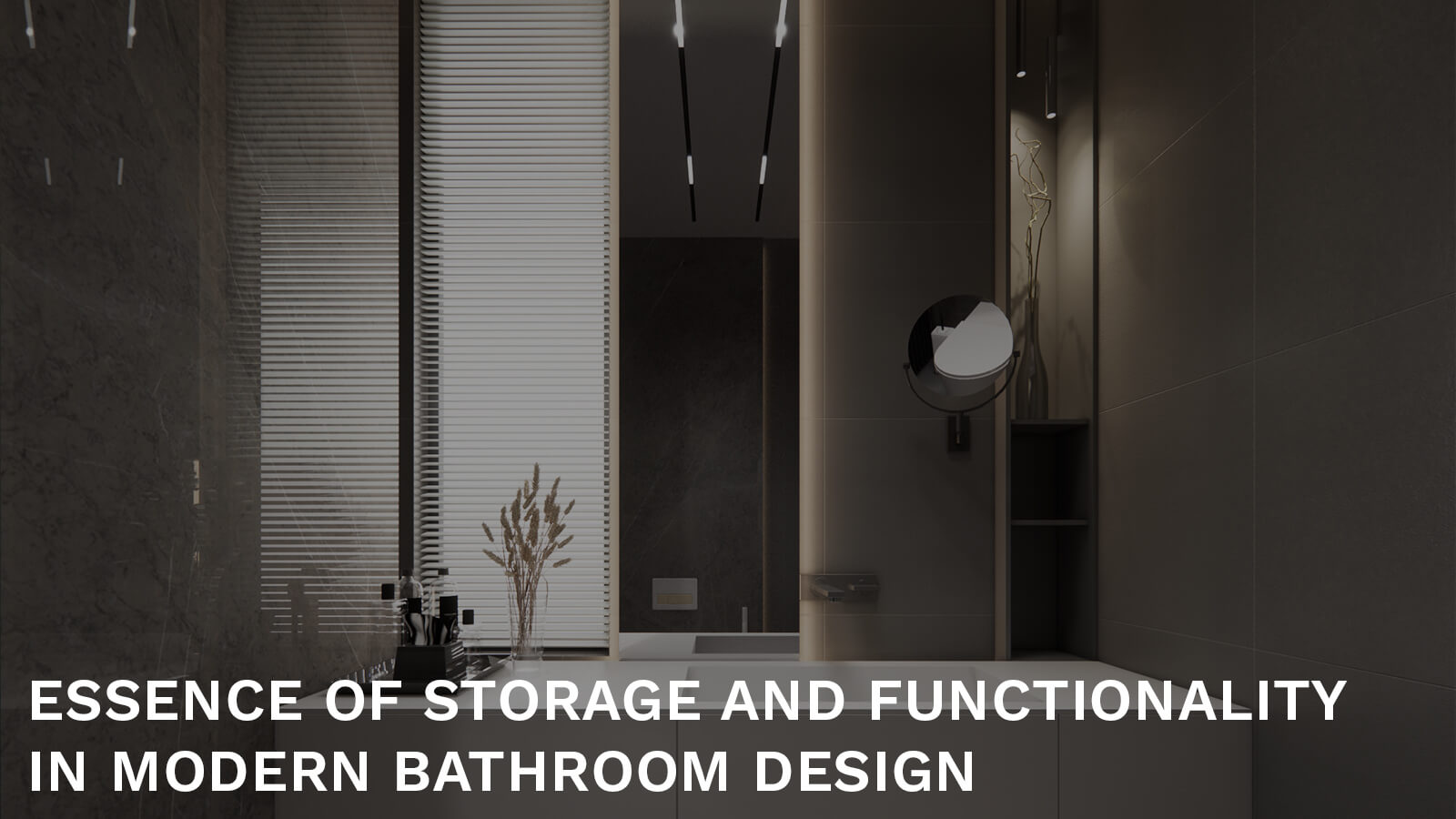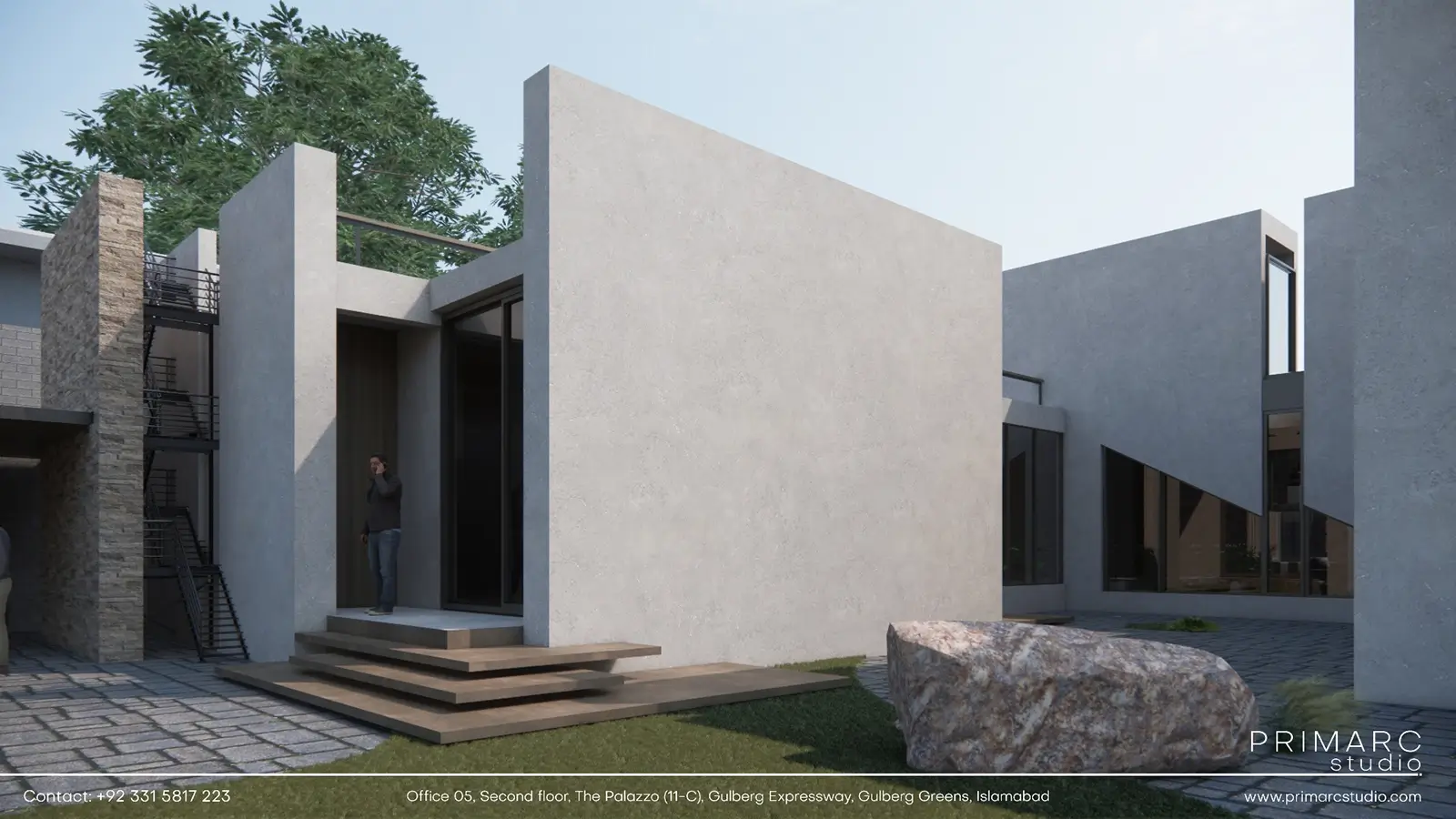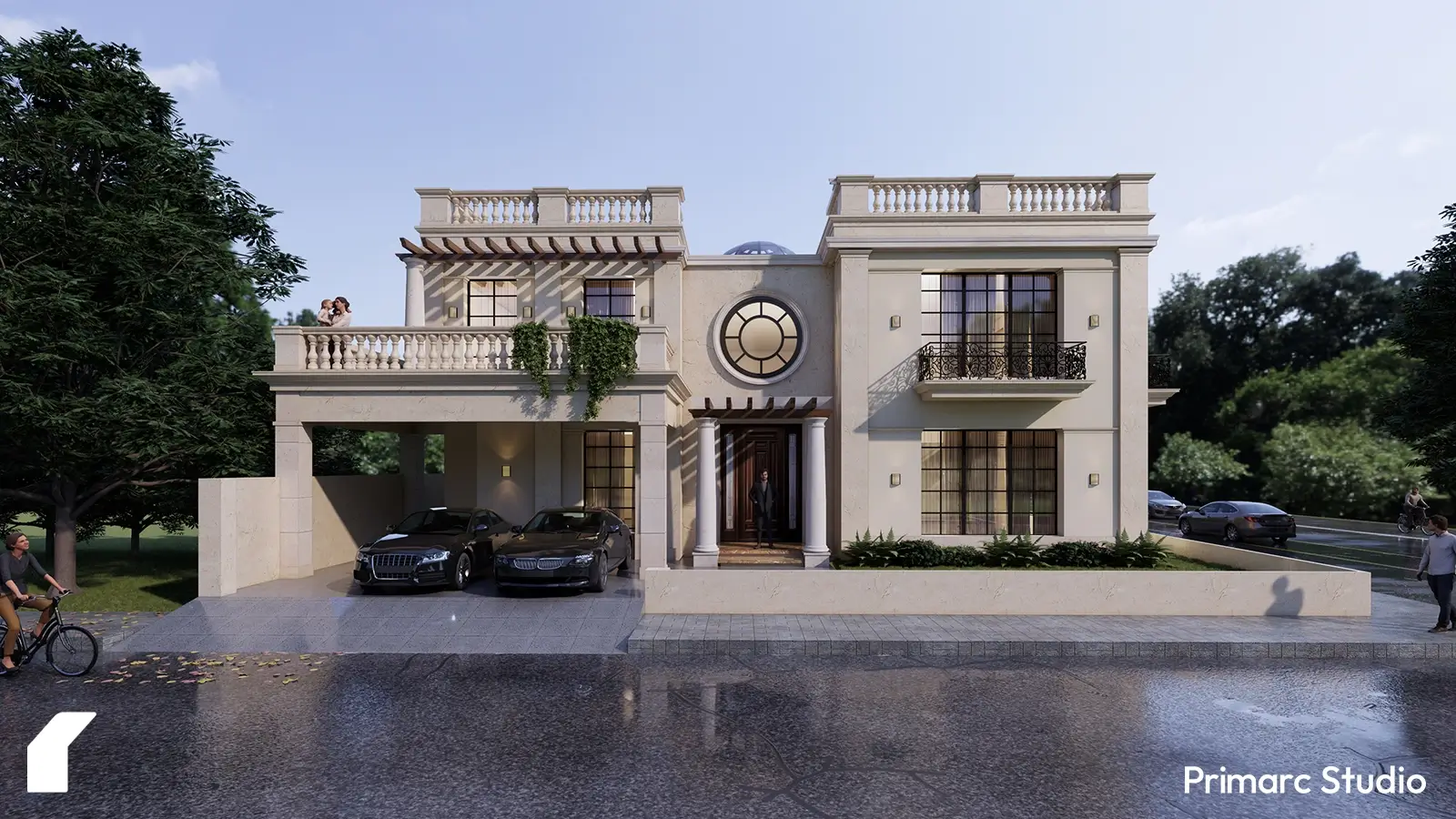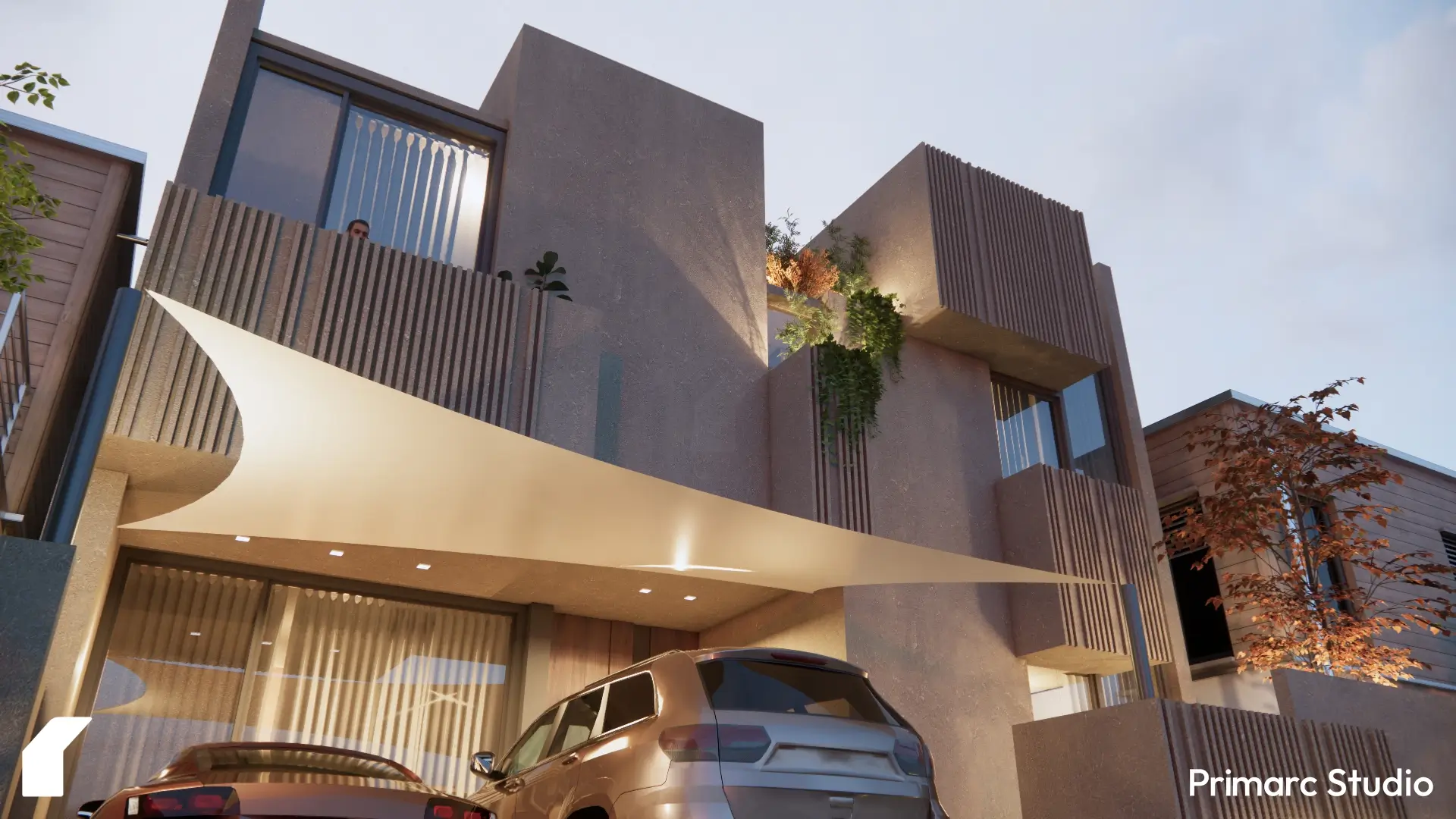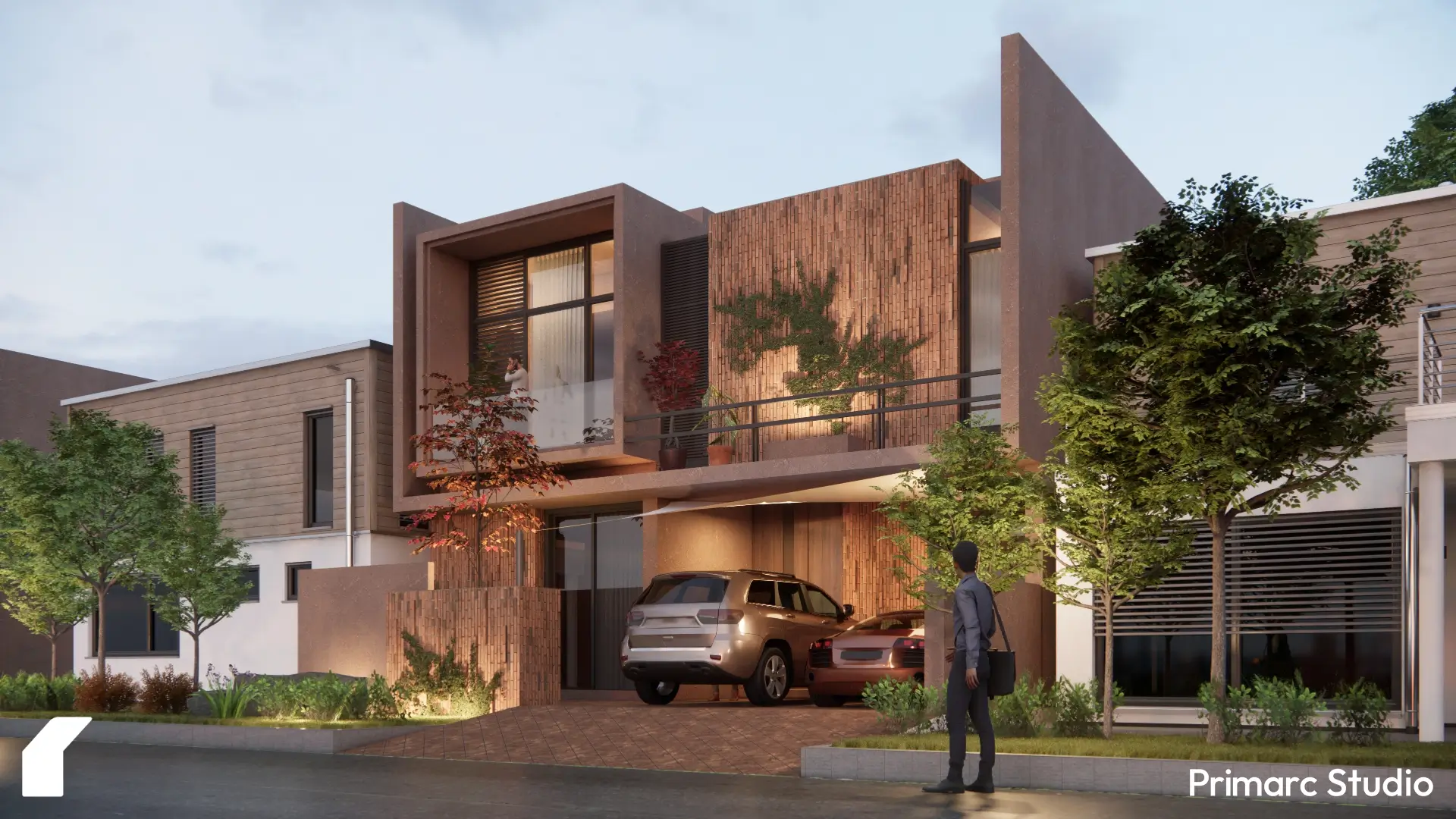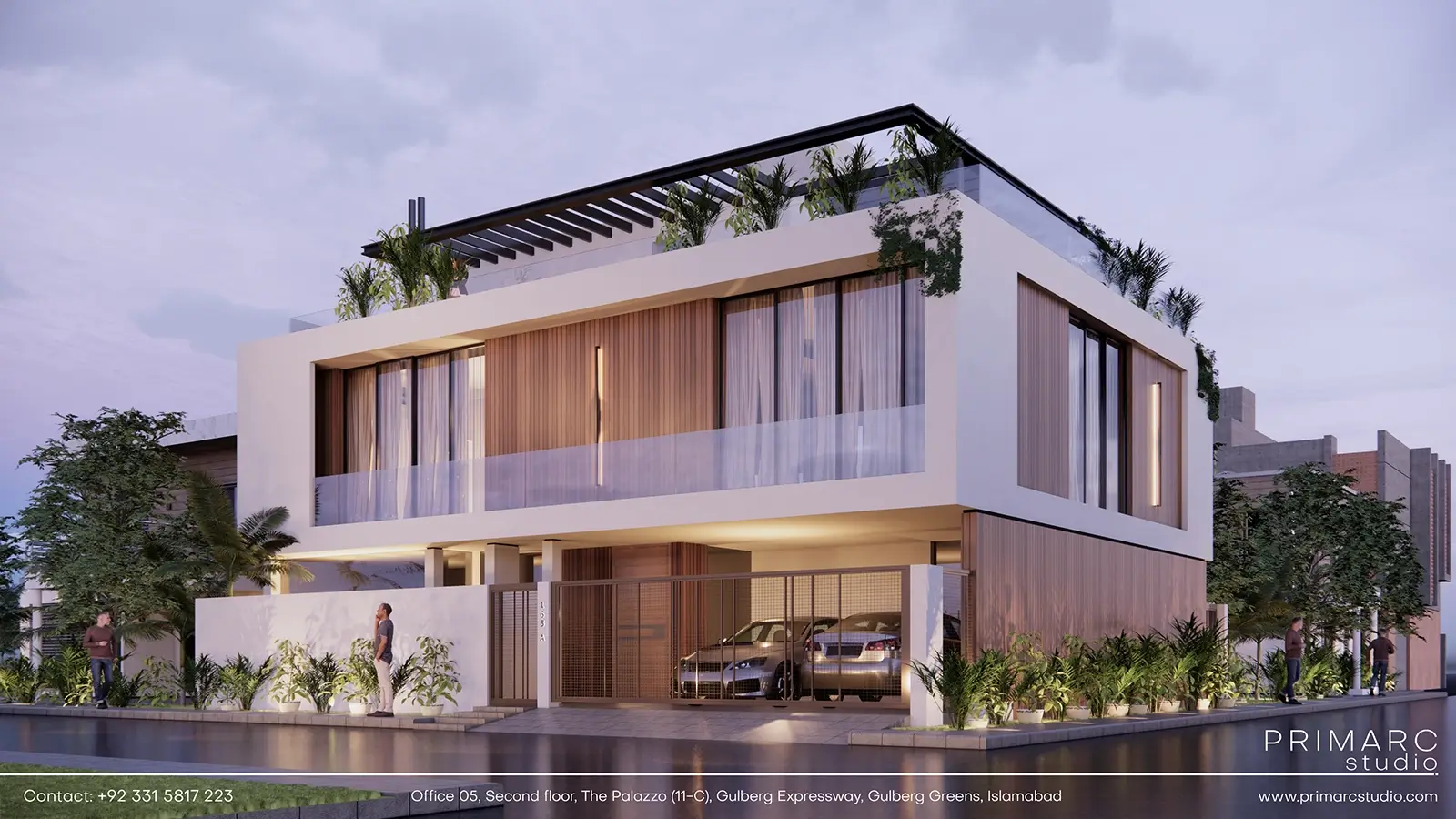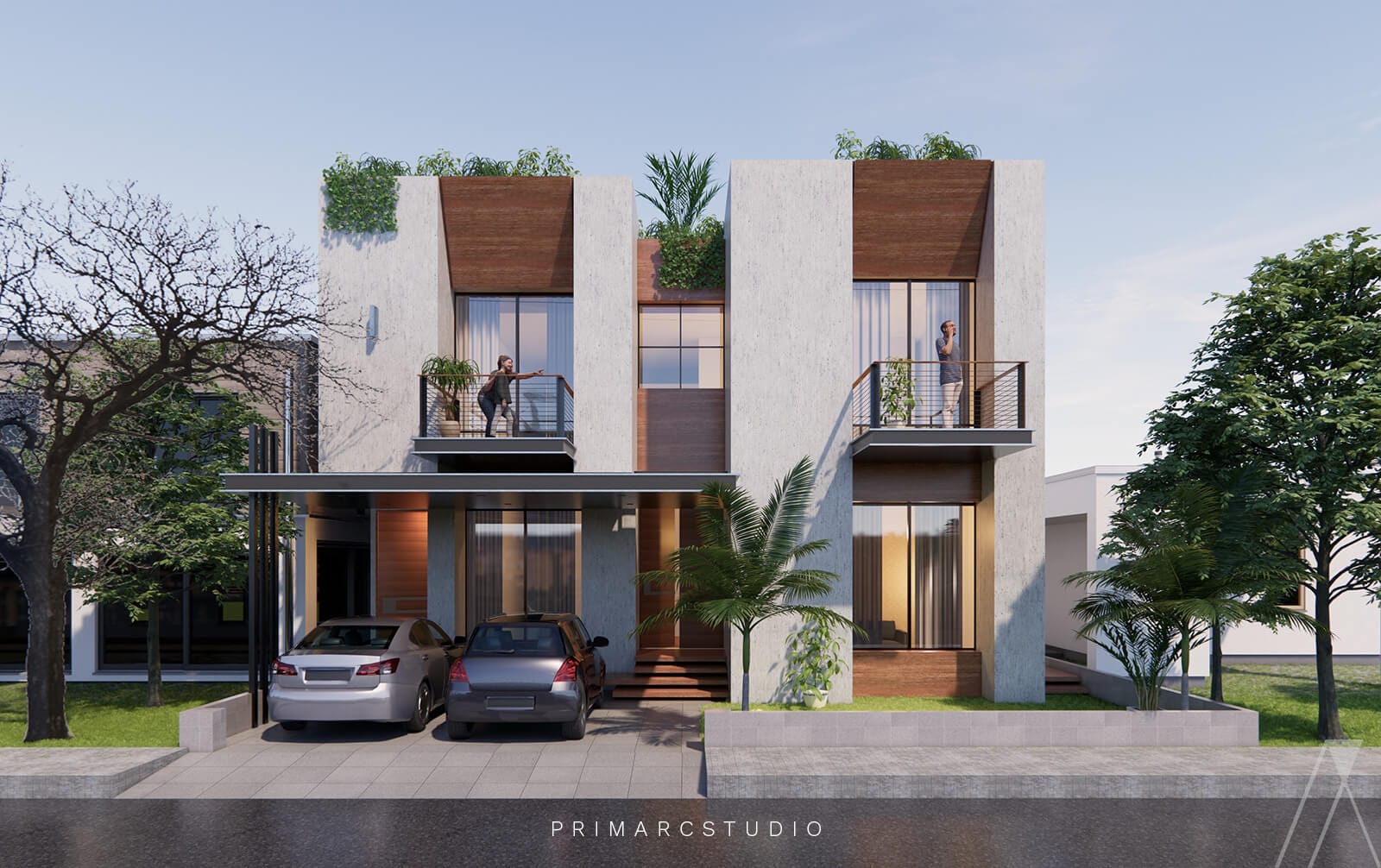Do you also avoid dimly lit public spaces like bus stops or shops because they give a dodgy vibe?
Same.
This is because subconsciously everyone needs to be under natural light to feel secure and in control of their surroundings. It’s also why babies are scared of the dark. But picturing ourselves in open fields of dandelions cheers us up instantly because being in natural light is associated with warmth, comfort and joy.
Are these just sappy scenarios to promote a greener lifestyle? Well, not really. This is just an example to make you reflect on natural light and why it matters.
In this article, we’ll explore the power of natural light in architecture, how it can improve your life, and how artificial light cannot replace natural lighting. But first, what is natural light?
What is Natural Light?
Natural light is light derived from the sun, moon and stars. Albeit the latter aren’t as resourceful as sunlight, they just fall in the category of natural light because they aren’t artificial or made. Call it sunshine, daylight or tanning extravaganza, natural light has been a key feature in architecture for centuries.
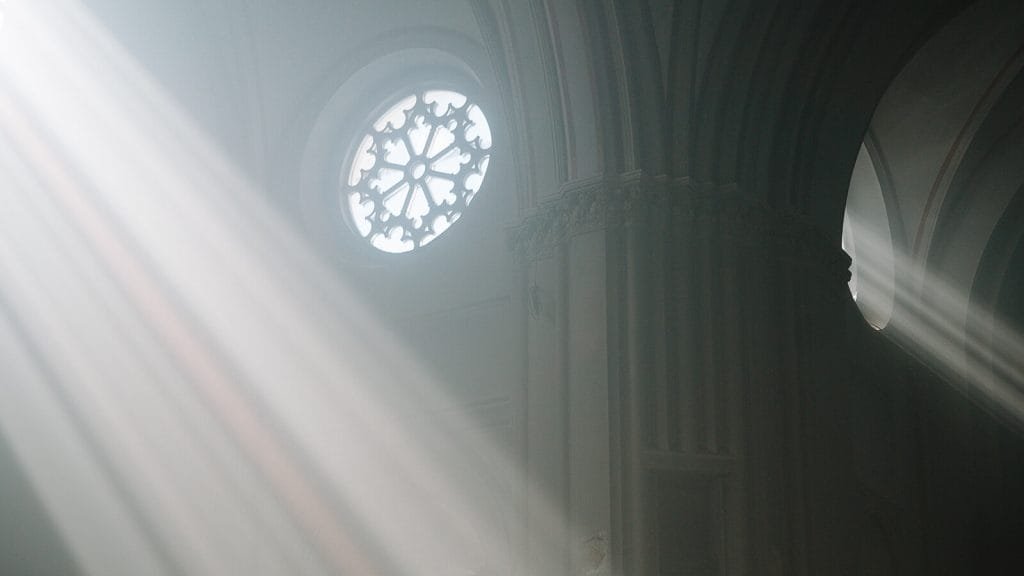
Architects have been incorporating natural light into their designs, from ancient temples to modern skyscrapers, to create visually stunning and functional spaces. But the benefits of natural light go beyond aesthetics, it can have a profound impact on our mental and physical health.
Not only that, but it also guides our subconscious choices regarding our decisions to travel, visit or live in certain places. This is why majority moves to cities with beaches and sunshine or atleast goes there to travel.
Impact of Natural Lighting on the Subconscious :
Our brains are wired to respond to natural light, and when we’re in poorly lit environments, it can trigger feelings of anxiety and stress. Natural light is however, short-lived, as it isn’t available during the night. To replicate natural lighting during dark hours, electricity was invented. As electricity began to spread, it became a standard household item in the late 1930s, which led to the adoption of artificial lighting in buildings.
However, this over reliance on artificial lighting rendered natural lighting obsolete for quite a few years till adverse health reactions began to be highlighted due to this fact. Numerous researches were conducted worldwide and a consensus was reached that natural lighting had a lasting positive impact on mental and physical health. Backed by this data, advocacy for natural lighting took hold once again and more effort was given to incorporate natural lighting in architectural design to promote it in residential design and in corporate design for office workers as well.
Hence, it is not unusual to observe the return of natural light within buildings. The emphasis is now laid on energy conservation, which is a pressing concern not only from an environmentally beneficial perspective but from an economic view as well. Growing rate of inflation is making it difficult for households to keep up with power bills. The average income has lowered in the face of growing interest rates, causing people to live on a hand to mouth budget.
All these factors are further exacerbated when the harmful effects of artificial lighting are taken into consideration. All benefits aside, artificial lighting is no match for natural light as it cannot replicate the benefits of Vitamin D. More natural light is the need of the hour and various health practitioners have noted an alarming rate of Vitamin D deficiency among children and adolescents.
Natural Lighting in Architecture: Making the Right Choices
This graph indicates how much energy consumption has increased over the past few decades due to decline in incorporating natural lighting within buildings. This graph by Velux illustrates how many people prefer buildings with natural light over poorly lit ones.
Hence, it is seen that natural lighting can influence a person’s mood and connection to space to such a great extent that people have begun dedicating research projects to it. The goal of the research is to encourage people to replicate the designs of the past architectural design and incorporate more natural light in modern architecture.
Benefits of Natural Lighting:
There are many ways that proper natural light can benefit a building, whether it’s residential or commercial.Here are a few examples:
1. Improved Visual Comfort:
Well-lit areas with natural light are more comfortable to the eyes and more welcoming to guests. In Pakistan in particular, families looking to rent or own pre-owned houses and apartments are usually known to look for natural lighting and airflow.
This is not strange as the country experiences frequent power shortage and people are conscious of not having to rely on electric lights for too long. Surveys indicate people look for natural light as a guiding principle when purchasing a property.
“A room is not a room without natural light.”-Louis Kahn
2. Increased Productivity:
Maximum natural light exposure has been demonstrated to enhance productivity, making a space more conducive to study or work. Natural light, in particular, has been related to increased concentration, productivity, and reduced absenteeism and illness, particularly in the office.
 IHI Innovation Center by Nikken Sekkei Architects.
IHI Innovation Center by Nikken Sekkei Architects.
Is it any wonder then why architects are advocating for more windows, courtyards, skylights and landscaping done to promote mental and physical reprieve from harsh working conditions.
Cubicles are being replaced by open windows overlooking greener views to stimulate employees creativity. This is also why modern and cutting edge commercial buildings are often situated in greener and robust areas.
3. Energy Efficiency:
As more natural light is present more in the space, you will have less need to use any energy-efficient lighting during the day. Which in turn lessens one’s carbon footprint on the environment and utility cost. It’s no surprise that businessmen and corporate officials are also pressed to provide amicable working conditions while being cost-effective in their approach to run full-scale businesses in a country overridden with socio-political upheavals. Less business means a lower budget which in turn causes budget cuts.
To strike balance, energy efficiency is being optimised through more natural lighting means. This may include using generators or solar lighting on places where natural light can’t be optimised.
4. Economical Lifestyle:
Energy efficiency is not just a commercial concern but a human concern. Households of all wages are equally pressured to make budget cuts. It is no longer a matter of luxury but necessity to become energy efficient and cost conscious. People would rather invest in solar lights than pay exorbitant amount of bills. The survival of the fittest now rests upon who is more open to natural light features than others. It is considered a smarter alternative to emptying out one’s pockets.
5. Aesthetics:
Proper use of natural lighting within the space can enhance the appearance of the building, give indoor spaces a larger feel and when daylight exposure is properly integrated, it ends up creating a more attractive and welcoming environment. This is especially true for public spaces like schools, universities, libraries, parks, retail buildings, etc. All public spaces need to be properly lit to meet the functional and aesthetic standard. Attracting consumers to buildings is a slightly easier task when the architects in charge implement natural light enhancing features.
 Century Tower by Foster + Partners
Century Tower by Foster + Partners
Public spaces with ample natural lighting are more crowded than huge plazas with even good quality of artificial lighting. The abundance of public amenities is a necessity which ought to be exploited for good measure. This is why festivals attract more crowds when they are organised under the sun in parks.
In the past people used to host functions under the open sky as well to curtail expenses and provide people the opportunity to bask in the direct sunlight and soak up some much needed Vitamin D from sun.
6. Increased property value:
A building with good natural lighting may be more attractive to potential buyers or tenants, and therefore will always be worth more. Courtyards and skylights with terraces and rooftop gardens are making a comeback for this exact reason.
 Gizri House in Karachi by Yasmin Lari
Gizri House in Karachi by Yasmin Lari
Covid-19 pandemic has taught everyone to cherish their access to natural light from the comfort of their homes. Highlighting the need to expose oneself to sunlight everyday to boost their Vitamin D levels, also play an important role among the new upcoming property owners. It’s no surprise then that most real estate agents choose to accentuate this aspect in all their properties.
7. Increased Lifespan of Light Bulbs and You:
Proper lighting can help extend the lifespan of light fixtures, which can save money on maintenance and replacement costs. Daytime is the time to experience sunlight. Replacing this much needed natural light with artificial lighting only does more harm than good.
Mental health practitioners have noted a distinct relationship between positive mental health, improve mood, less depression, and natural light interaction. From an economical perspective it is costlier on the pocket to have to keep the lights on during the day, too just because the architectural design didn’t incorporate natural light within buildings.
Better health, just means better body and less visits to the doctor overall.
8. Improved Circadian Rhythms and Sleep:
Studies have found that sun is best source for getting your daily vitamin D, which helps regulate your circadian rhythms and better sleep patterns. Good exposure to natural lighting can help regulate the body’s natural sleep-wake cycle and improve sleep quality, which can positively impact overall health and well-being.
This is also why much effort is being given to encourage people to exercise early in the morning under the sun and design modern gyms in ways to incorporate natural light and air. Infants and adults alike are being reported to have adverse effects on brain development and health management due to improper sleep and Vitamin D deficiency.
Meanwhile, studies showed that those children or adults who gained a significantly higher exposure to natural light were notably experiencing better sleep cycles and improved productivity levels.
 The factory of Ricardo Bofill
The factory of Ricardo Bofill
“Light creates ambience and feel of a place, as well as the expression of a structure.” –Le Corbusier
How Can I Add More Natural Light in Modern House Design or Office Space?
All hope is not lost yet. If your current living space has no definitive sources of natural light, here are some slight changes you can implement to gain additional natural light and reap the benefits without starting from scratch!
Mirrors and More Mirrors!
You can spice up your dull office space or living room with smartly placed mirrors. Smaller mirrors that come in a variety of shapes can be placed adjacent to windows to allow more sunlight to bounce in other corners of the room, simultaneously giving the impression or sense of being well-lit, increasing the effect of natural lighting and a brighter room!
 Oversized Mirrors in Architecture: Mirror in bedroom
Oversized Mirrors in Architecture: Mirror in bedroom
To Drape or Not to Drape?
You can also go ahead and ditch the dark and dreary drapes for either flowy net fabrics that give privacy while letting in sunshine or go drapeless. It might be a hard pill to swallow but at the end of the day would you rather have chronic problems due to absent natural light or no drapes?
Preserve your Sanity, Get Inspired!
Its time to stop replicating the interior design of a sanatorium and go for pastels or eggshell shades in colors. You don’t need a neon bright paint to light up the room but ditching the matte white for lighter shades would add a little life to the otherwise drab spaces. For those who dread paint selection, they can opt for floor rugs and carpets in light colours to brighten things up instead.
Trim and Snip Those Bushes:
Thats right, those lovely bushes and tree which provide shade are also darkening up your house. Make sure you get the hedges trimmed and trees get their timely cuts to allow in enough natural light.
 Landscape design by Louis Benech
Landscape design by Louis Benech
This may cure your SAD symptoms, body clock and eye strain overnight and help you relax more freely in the comfort of your home.
“Lighting is everything. It creates atmosphere, drama, and intrigue in a room.” –Martyn Lawrence Bullard
We Wish You’d Wash Your Windows:
Neglecting window cleaning or delaying them being washed also prevents natural light from entering your home. It is important to have the right window styles to capitalise on sunlight direction and equally more important to clean them regularly!
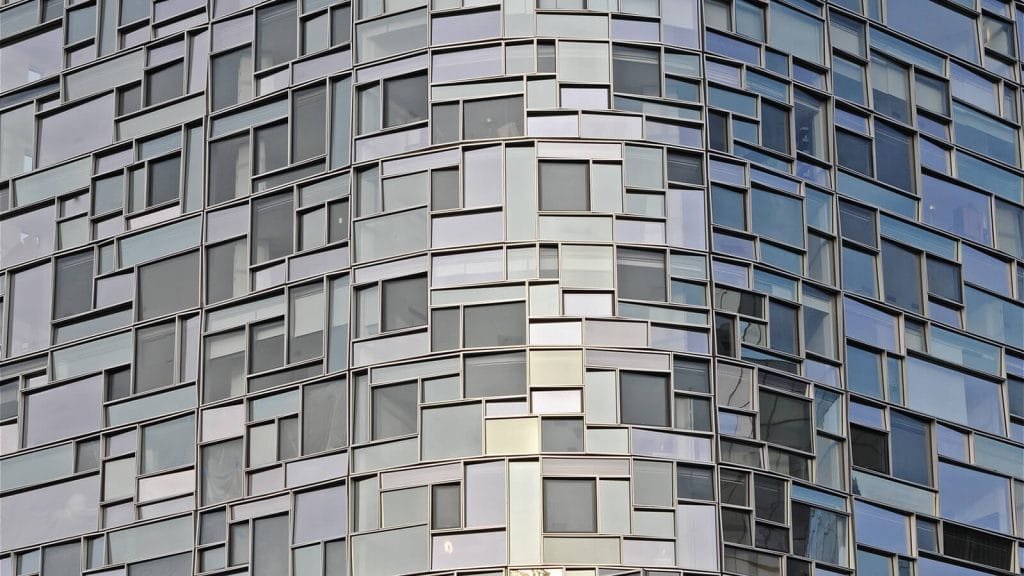 There you have it, a little crash course on the many benefits of natural light and why you should open up the windows to let more natural light, and morning light in.
There you have it, a little crash course on the many benefits of natural light and why you should open up the windows to let more natural light, and morning light in.
You can get in touch with Primarc Studio – Architecture and Interior Design studio for your next architectural design whether it’s in Rawalpindi, Islamabad, Swat, Peshawar or anywhere in Pakistan. You can contact us via phone at +92 331 5817223, email at primarcstudio@gmail.com or social media like Instagram, Facebook, or whatever suits you.
Key Takeaways
- Natural light is derived from the sun, moon, and stars, and has been a key feature in architecture for centuries.
- Natural light not only has a profound impact on our mental and physical health but also guides our subconscious choices regarding our decisions to travel, visit or live in certain places.
- Artificial lighting was invented to replicate natural lighting during dark hours, but this overreliance on artificial lighting led to adverse health reactions.
- Natural lighting has a lasting positive impact on mental and physical health and is being incorporated into architectural design to promote it in residential and corporate design for office workers.
- Natural lighting can influence a person’s mood and connection to space to such a great extent that people have begun dedicating research projects to it.
- Proper natural light can benefit a building in several ways, including improved visual comfort, increased productivity, and energy efficiency.
Frequently Asked Questions – FAQs
Question. How does lighting impact the emotional value of architecture?
Answer. Lighting plays a significant role in the emotional impact of architecture, as it contributes to the overall experience of the space. Whether it’s natural or artificial lighting, it highlights the textures, colours, and shapes of a space, allowing the architecture to fulfil its intended purpose.
Question. Can the design of a building impact how you feel?
Answer. The appearance of a building can also affect our emotional response. The way a building looks can impact us psychologically, and if it looks pleasing, it can make us happy. On the other hand, a badly designed building can have the opposite effect, leaving us feeling unhappy or uncomfortable.
Question. How does lighting impact our mood?
Answer. Studies suggest that lighting levels can affect how we perceive temperature, leading us to feel warmer or cooler. This, in turn, can intensify our emotions. Bright lighting can activate the “hot emotional system,” making us feel more passionate about our thoughts and feelings. Positive and negative emotions are both impacted by bright light.
Question. How does natural lighting affect our subconscious?
Answer. Our brains are wired to respond positively to natural light, and when we’re in poorly lit environments, it can lead to feelings of anxiety and stress. While electricity was invented to replicate natural lighting during dark hours, an over-reliance on artificial lighting caused natural lighting to become obsolete for a while. However, recent research has shown the adverse health effects of this trend, leading to renewed advocacy for natural lighting in architectural design, including residential and corporate spaces, to promote a healthy environment.
Question: How do architects promote natural lighting in buildings?
Answer: For millennia, architects have used natural light to create beautiful, functional rooms. They depended too much on artificial light and forgot about the benefits of natural light. Architects are reintroducing natural light since studies suggest that too much artificial light is unhealthy. To improve businesses and houses, they’re installing windows, courtyards, skylights, and landscaping. Architects want workers to relax.
Question: What makes natural light so significant in architecture?
Answer: Natural light has been a game-changer in architecture for a long time. It does wonders for our mental and physical well-being and affects our decisions to go places. Natural light also helps buildings in many ways, whether it’s a house or a business, such as making us more comfortable, boosting our productivity, and being kinder to the environment by saving energy.


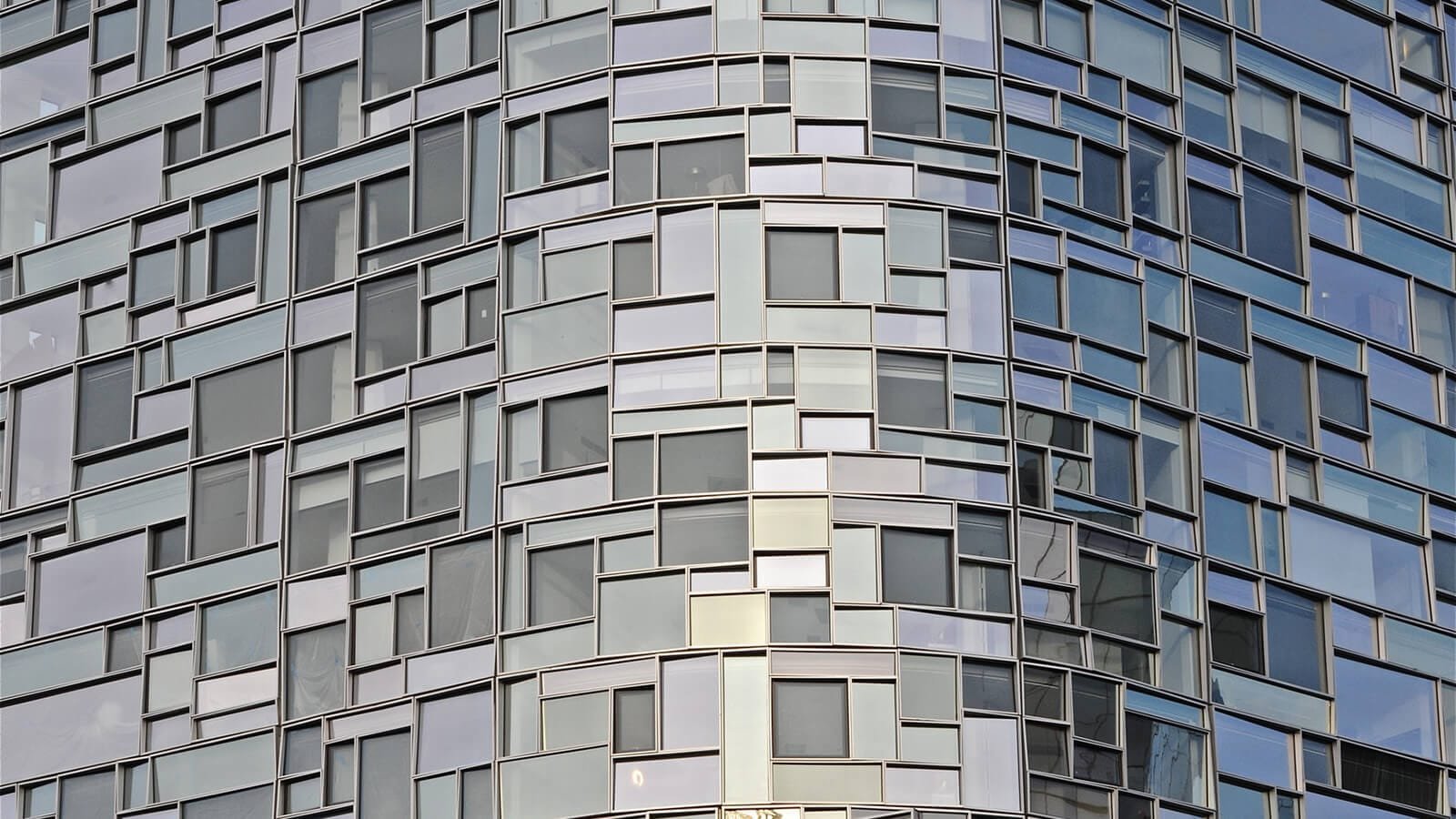


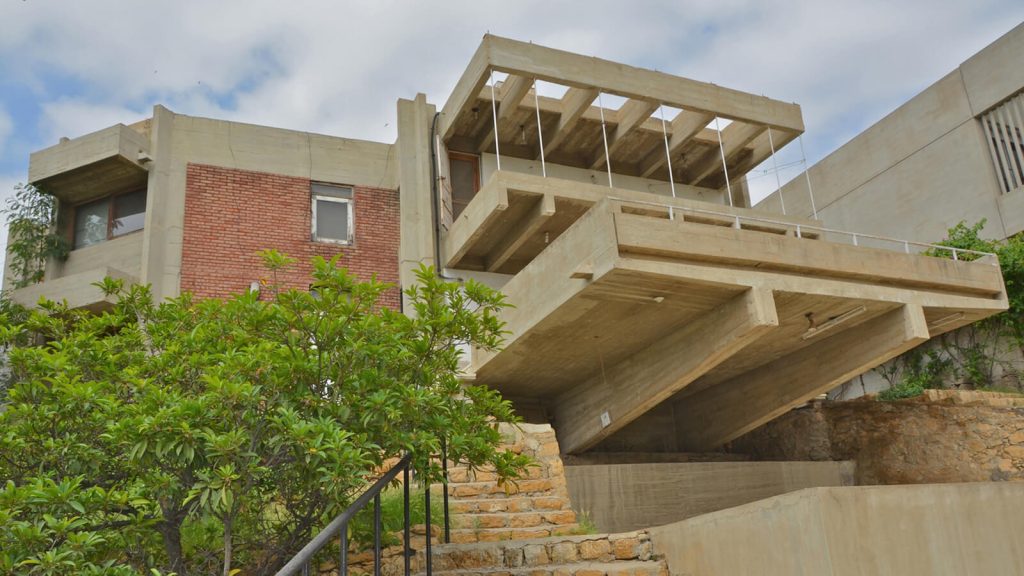


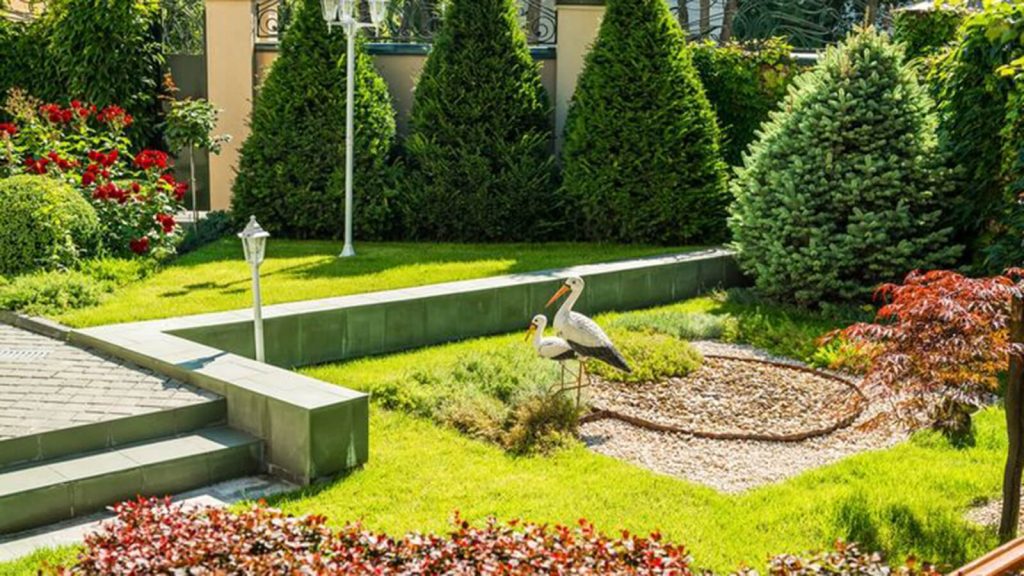 Landscape design by
Landscape design by 